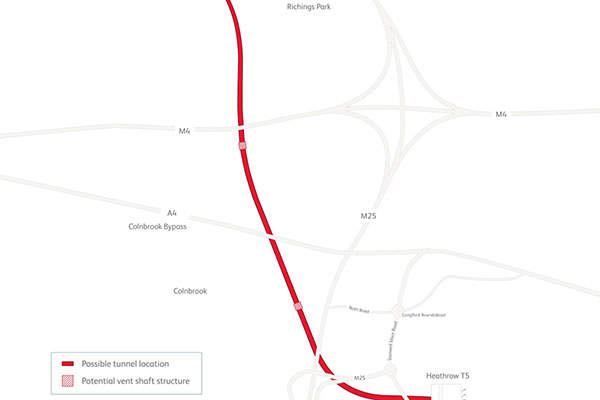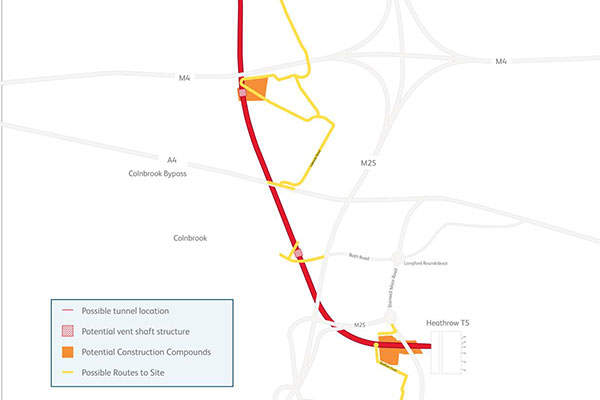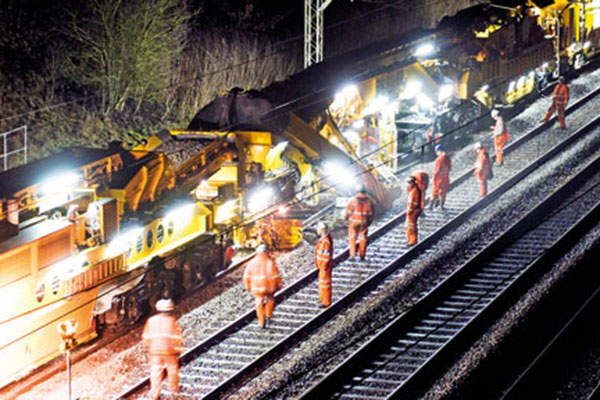Western Rail Access to Heathrow (WRAtH) is a proposed direct rail link by Network Rail between the West of England and London Heathrow airport.
Also known as Heathrow rail link, the new project will improve access to Heathrow Airport from the South Coast, South West, South Wales, and West Midlands. It will also reduce travel times between Reading and Heathrow, while reducing congestion at Paddington station.
Construction of the new rail link is anticipated to begin in 2019 and is scheduled for completion by 2024.
Project details and benefits of the Heathrow rail link
The new rail link will include an approximately 5km direct, double track line that will be laid in a tunnel between the Great Western main line at Langley, Berkshire, and Terminal 5 at Heathrow Airport. The line will extend above ground for approximately 250m before running into the tunnel.
The Heathrow Express is a high-speed service link offering the fastest journey time between Heathrow Airport and central London – 16 minutes (21 minutes to Terminal 5).
The new route will ease congestion on the M3, M4, and M25 motorways, while also reducing CO2 emissions.
The project is expected to create economic benefits for businesses in the region, and form employment opportunities for approximately 42,000 people.
Phase I of public consultation on the proposed rail link project was completed in April 2015, while Phase II was initiated in February 2016. Network Rail is expected to submit the application to the planning inspectorate in the Q4, 2017.
Upon obtaining planning consent, construction of the rail link is expected to begin in 2019, and will continue for four to five years. Operations are expected to begin by 2024.
Network Rail conducts a full environmental impact assessment (EIA) before the finalisation of the proposed rail link project. The EIA evaluates surface-water and flood risks, hydrogeology, contaminated land, waste and spoil disposal, traffic and transport, noise and vibration, and socio-economic effects.
Tunnel construction
The project will also include the construction of a 3.1 mile (5km) rail tunnel linking the main line at a new junction created between Langley and Iver stations with London Heathrow Terminal 5.
The tunnel will allow passengers to travel to the airport from Reading via Slough, bypassing Paddington station. It will allow four trains an hour to run between Reading and Heathrow.
The tunnel will be built between 10m and 30m below ground and will have a diameter between 6m and 7m.
Contractors involved with the rail link to Heathrow
Jacobs Engineering Group was contracted to provide pre-feasibility and feasibility studies of the proposed rail link. It was further contracted to provide designs in March 2015.
Under the contract, the company performs topographical surveys and geotechnical investigations, as well as tunnelling design. It also provides railway systems design for the track and overhead line equipment.
Jacobs was also awarded a contract to provide environmental surveys and environmental impact assessment (EIA) for the tunnel optimisation, as well as design of surface structures.
Network Rail’s Signalling Design Group provides signalling design for the route.




